The All-America Selections symbol next to a plant is something you may not have even noticed or paid attention to. I did to a certain extent, but never really thought much about how a plant got that designation and how much it impacts what we plant.
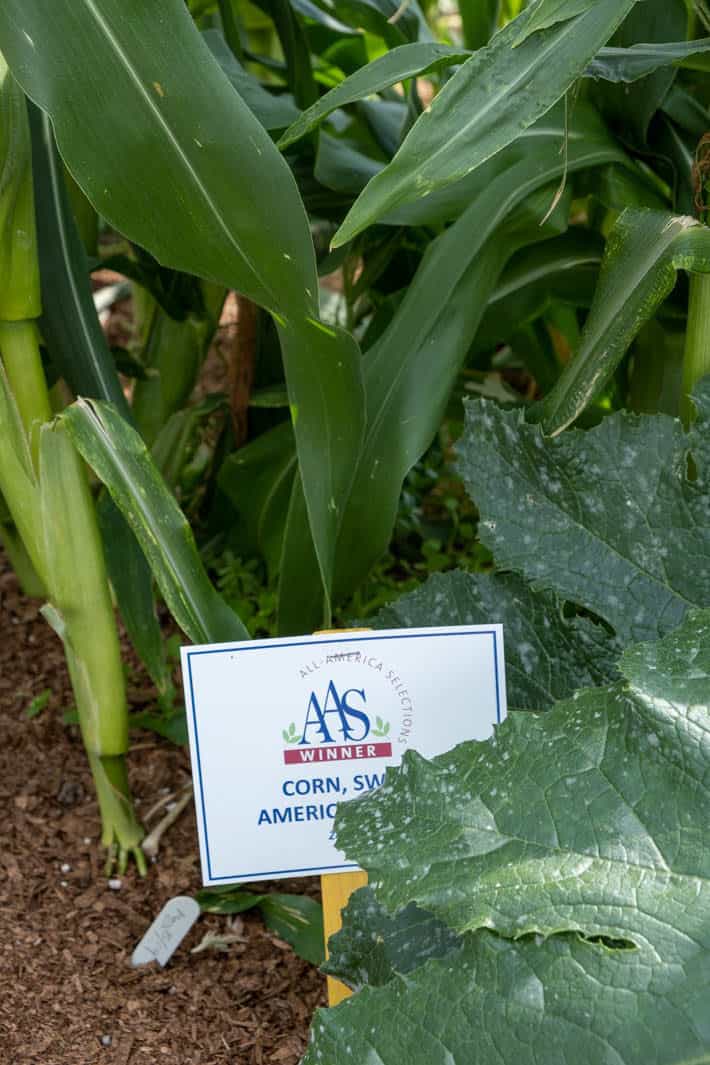
Let me take you all back in time. The year was 1994. There were NO Wave® petunias. None. They did not exist. Window boxes around the world were filled with ... regular petunias. I know. I should have warned you how shocking this story was going to be.
Then, in 1995, a new flower was entered by its breeder into the AAS judging trials and it won. That flower was the Wave® petunia. And that breeder was - a Japanese beer company. Yes. Seriously. As soon as the Wave petunia won the AAS designation, it became available in North America and the rest is window box history.
That shows the power of an AAS designation. Granted, the Wave petunia was ground breaking. A petunia that LIVES through the summer AND trails for 3 feet? I mean come on. But without the designation of being an AAS winner it might have gone unnoticed.
The "AAS" is the All-American Selections, a designation given to the best of the best in the plant world. Last week I was invited to go to an informal AAS event. That event involved a 5-course meal so I said Yes, of course I will go, shall I bring my own bag for any leftovers from the kitchen or will that be provided?
All of the food would be made with vegetables that had been designated as AAS winners. I had a general idea of what the AAS was but no idea of how it all worked. I have the same relationship with math.
In a nutshell here's what the AAS is:
What is the AAS.
- The All-American Standard is a non-profit, independent organization that tests BRAND new varieties of ornamental and edible plants.
- They formed in 1932.
- Impartial horticulturalists and seed companies across North America test brand new seeds and varieties before they've even been named yet and compare them to other similar plants. A compact red geranium will be compared to two other popular compact red geraniums for example to see if this NEW variety is significantly better.
- There are over 80 trial sites across the US and Canada.
- Judges at the trial sites evaluate characteristics like earliness, taste, disease-resistance, uniqueness and more, depending on the species.
- Their mission statement is: "To promote new garden varieties with superior garden performance judged in impartial trials in North America."
So last Tuesday morning, I hopped into my car and drove up the hill to William Dam Seeds the starting point of the day, and an AAS trial site. From there myself and fellow gardening journalists and enthusiasts travelled to The University of Guelph for a tour of their AAS trial garden, their kitchen vegetable garden and had a 5-course meal made with AAS vegetables.
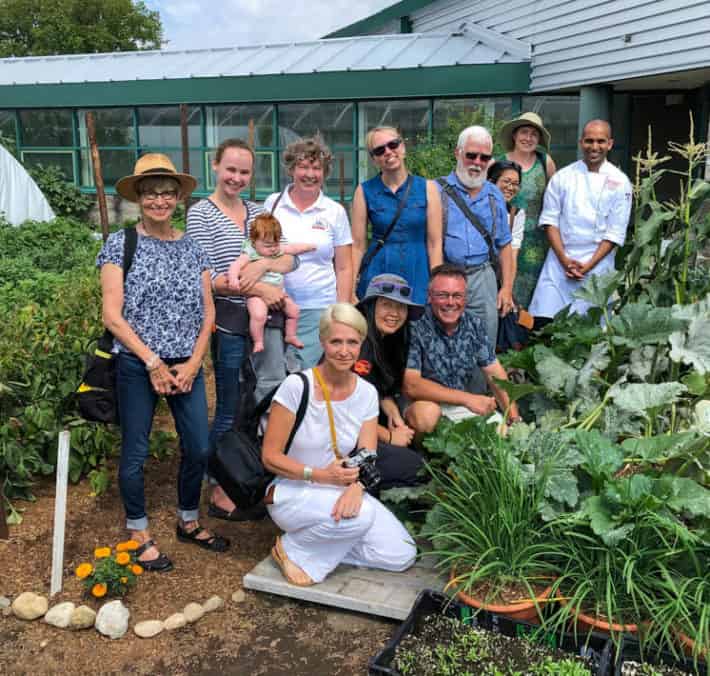
The Guelph University kitchen garden is small, and instead of feeding the students, it's mainly used to teach food students about where food, a carrot for instance, comes from.

Carrots come from buckets. Let this be a lesson in innovation for you. You can indeed grow almost anything in a container, and use what you have. The U of G has tons of muffin batter buckets that they use to make muffins for the thousands of students. So instead of throwing them out or recycling them, they're repurposing them to grow all KINDS of vegetables in. Carrots, corn, okra and eggplant are just a few that I saw.
After the garden tour we were led into a dining room and sat down to 5 courses of AAS vegetable winning dishes.
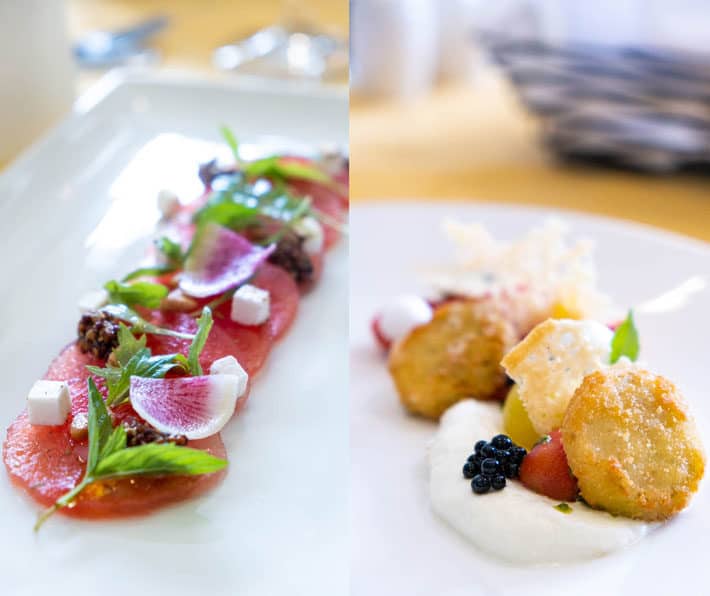
The Menu
Watermelon & Feta salad w/ Strawberry vinegar
Roasted Butternut squash ravioli w/ Parmesan foam & pumpkin seeds
Tomato Salad w/ goat cheese mouse, parmesan crisps
Braised beef cheek w/ corn puree, Ratatouille stuffed squash blossoms
Pumpkin Tart
Would you like to save this stuff?
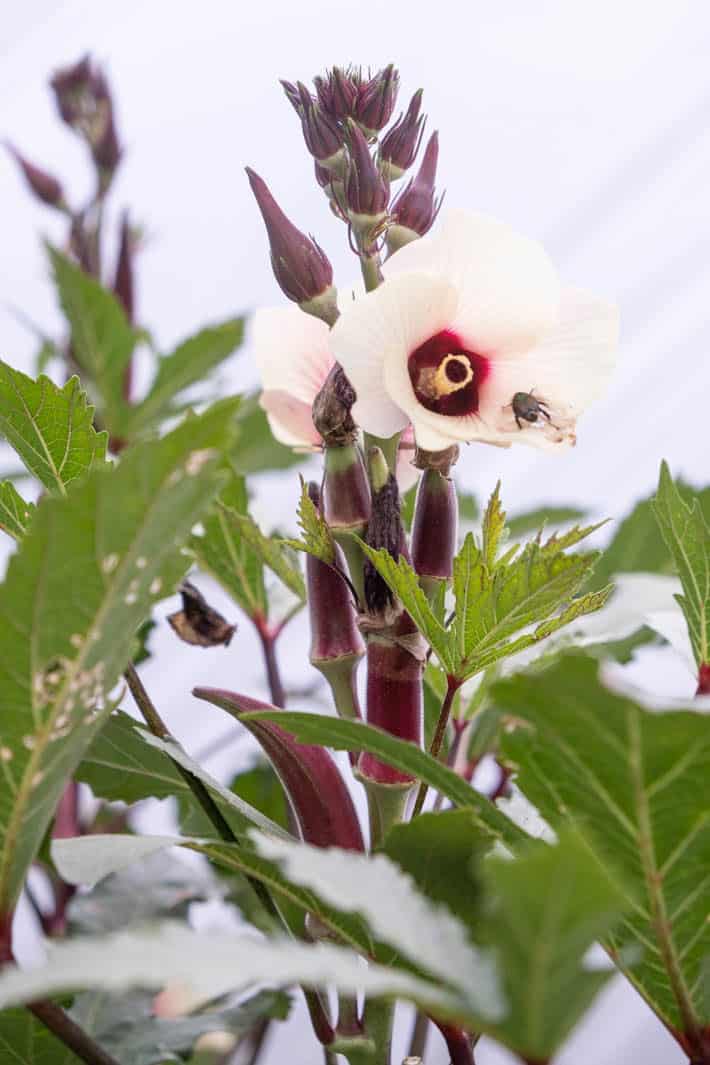
Candle Fire Okra - pink okra
The AAS winning varieties included.
Corn - Sweet American Dream
Tomato - Patio Choice Yellow F1
Tomato - Valentine F1
Tomato - Chef's Choice Pink F1
Pepper - Hot Sunset F1
Pepper - Aji Rico F1
Watermelon - Cal Sweet
Squash - Butterscotch F1
Pumpkin - Supermoon F1
The AAS Process (in a nutshell)
- Trial gardens are given the seeds or cuttings of new varieties that are being entered to win that season.
- They are also given seeds of cuttings for 2 comparison plants. (so they have something to compare the new variety to)
- Plants are not named. They only have a number.
- The test plant and the two comparison plants are grown side by side so a visual comparison of size, colour and disease resistance can easily be made. Vegetables are also taste tested.
- After growing, testing and judging, the plants are destroyed.
- To win the AAS designation it has to be judged as being clearly superior to whatever it is being compared to and if it isn't then it doesn't win the AAS designation.
- Some years many plants win an AAS designation, others only a few.
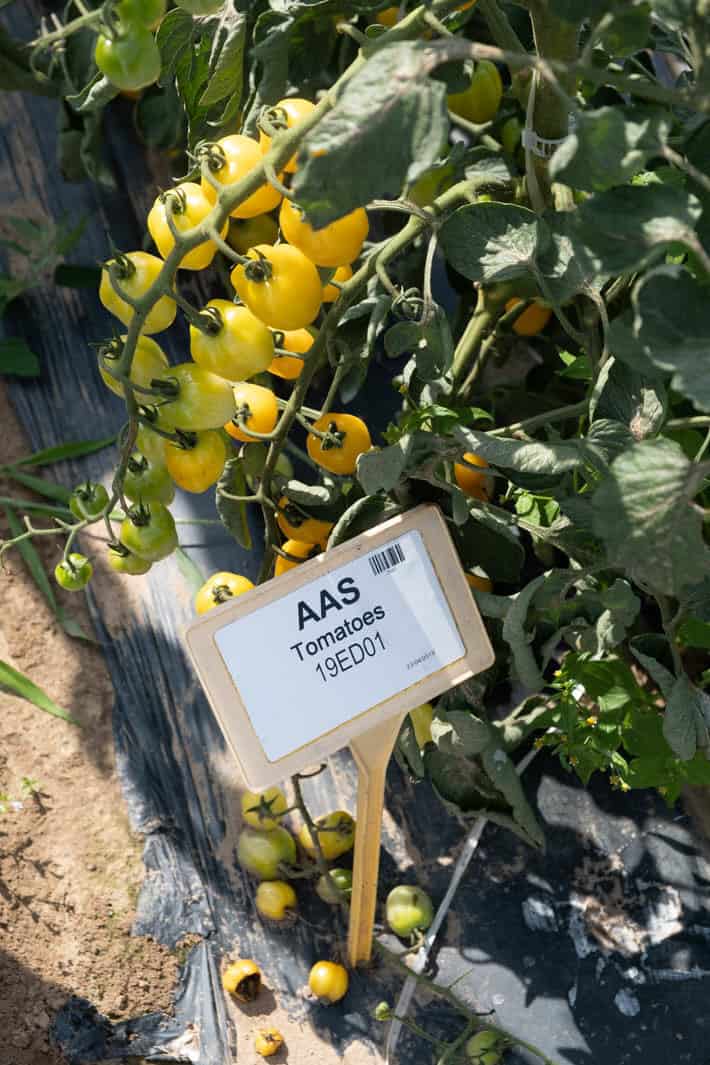
These tomatoes at William Dam Seeds are being trialed this year. They're shaped almost like a bell pepper, are about the size of a small plum tomato and had very little "gooey guts". If the judges declare them a "winner" you'll be seeing them in seed stores by spring with the AAS designation on their seed packets.
If they aren't designated a winner, they could still end up for sale if one of the judges who grew them takes enough interest in them to hunt their breeder down after the trials. Not an easy task with an unnamed tomato that isn't actually for sale.
I feel a bit of a gardening fool for not realizing how significant AAS designations are. I mean - Wave Petunia!
Do you grow Juliet tomatoes? Also an AAS winner. Black Beauty Zucchini. Celebrity Tomato. Purple Haze carrots, Fairy Tale eggplants, All AAS winners.
(Not all developed by a Japanese beer company.) ;)
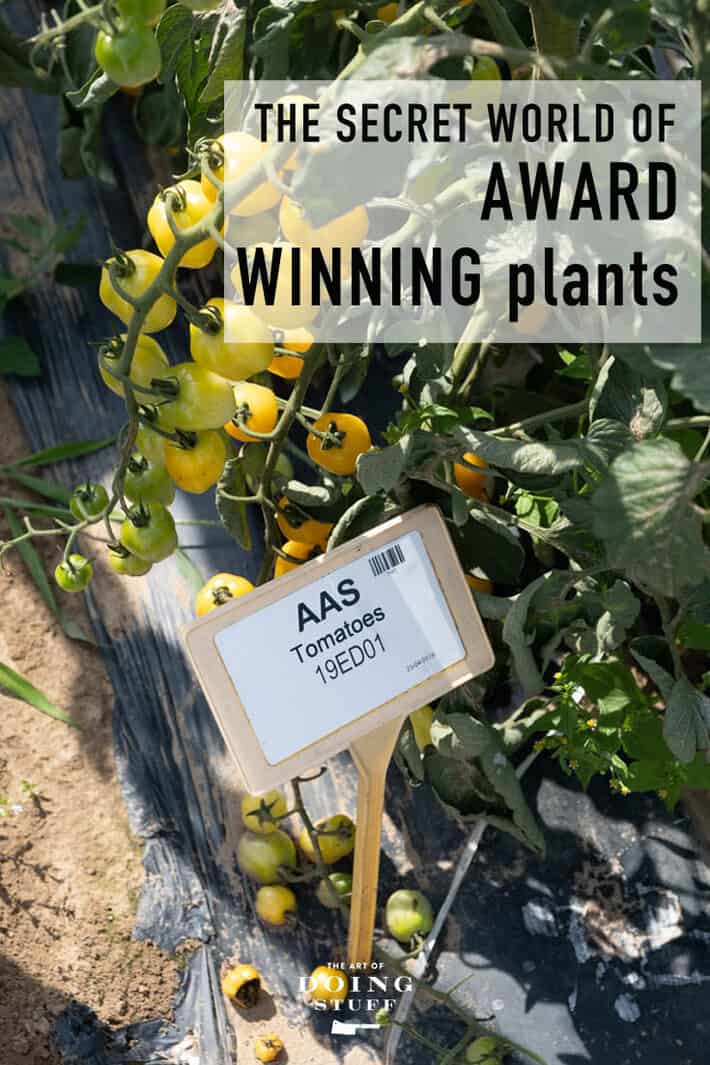


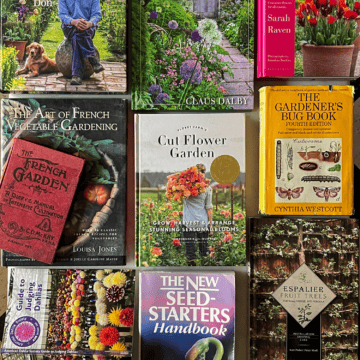
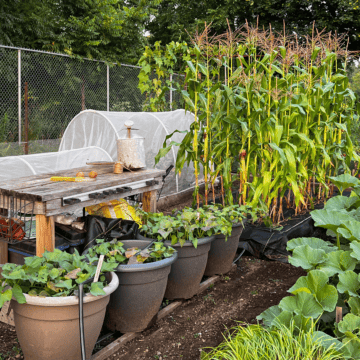
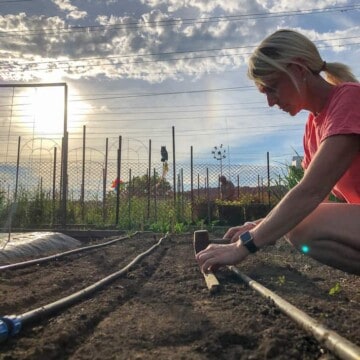
Penny
Very interesting article, thanks, Karen. That ravioli looks lush!
Here in the UK we don't, of course, have AAS, but we do have a very similar thing called the Royal Horticultural Society Award of Garden Merit.
Again, these are new plants/varieties that have been thoroughly trialled and found to be superior to the existing variety.
Susan T Blake
What a fun day! Very cool that you got to go. And great info, thanks! In which dish was the okra used? I didn't see it on the menu. And. I salute you for wearing white to a garden-related event. If I wore white anywhere near a garden it wouldn't be white for long. (What were you thinking?!!!)
Karen
LOL. I wear white in the garden all the time and yes, it shocks people. And yes I get dirty, lol. I can't remember which dish the Okra was in! There was so much. But I do remember it was sliced crossways like a ring. Just a few rings of it were on the plate. ~ karen!
Barb
Hi Karen! I am fascinated and encouraged by the container gardening. I sold my farm this summer and moved to the beach. I planned a fabulous garden on my sandy little plot in the woods, using lots of manure and mulch and so on to enrich the sand. All those things worked great on my farm garden. Currently the yard is mostly moss and weeds and a bit of grass that dries up at the drop of a hat.
Last week I got a notice that I am located very near a municipal well, and I can't use any fertilizer that has nitrogen. There is a high nitrate level in the local wells. My house is within 100m of one of the wells, and in a 'highly vulnerable' area for contamination of said well- like 10 out of 10. This ban is likely to continue for 10 years or so, and there is a hefty fine if they catch you with such fertilizer, too. No manure is allowed either. Soooo... my dreams of having a beautiful garden again have taken a hard left turn, and I will have all winter to figure out what to do with my yard, and how to grow my beloved veggies and flowers.
I can, however, grow in containers, and use traditional fertilizer on them, as they assume the plants use it up before it gets to the soil.
Any advice on the containers for veggies? I'd like it to be pretty, as I have a small yard now. What kind of soil did the AAS trials use? Can I get in touch with William Dam for information too? Thanks, Karen!
Karen
Hi Barb. I think the best thing to do for growing in posts is to get something large, food grade and reuseable like the muffin batter buckets from local schools or restaurants. And THEN put those buckets in something nice. You can cover the top with moss or coco liners or straw or anything else so you don't see the ugly plastic bucket inside. Plus it covers the top of the soil in the bucket which helps reduce moisture loss. I would guess the University of Guelph used native soil amended with compost. Just remember when you're planting in buckets that you have to replenish the soil at least once a year, preferably twice. So a shot of fertilizer or another layer of compost. :) ~ karen!
Mary Edmondson
Re okra slime. I’m not a cook but I love okra and have always cooked it whole, boiled in water. Unless my aged memory is failing me, I don’t recall ever having found slime on my plate when I cut in to the okra. Will have to do this again to see if memory serves me well.
Dd51
My mother was given a bunch of okra as a welcome to the neighborhood gift when we moved to Arkansas. I’m not sure she had ever seen/cooked it before, I know I had no clue what it was. She sliced it and then boiled it . It looked like a giant bowl of slime, green, and nothing we were going to put in our mouths! Almost ruined okra forever for me until I had pickled okra, did not know it was the same vegetable. Maybe because she sliced it? I have no idea, but for years we teased her about it. Even the dog wouldn’t eat it and he would eat anything.
Melissa
This is fascinating. I would have given my right pinky to be there to try those glorious foods. Plus, how cool to hang out with fellow enthusiasts. Thanks for sharing this intel... now I'll know to keep an eye out for the AAS designation.
Sabina
What a fun field trip! I almost planted okra this year but went with the loofah instead. It's flowering but no fruit yet. That's my trial plant this year and I'm on the fence. The loofah is over the fence and quietly approaching the neighbors patio room but they don't seem to mind :~0
Kim
I can't get past the bug on the okra bloom -- is that a (horrific gasp) japanese beetle?
Great post btw!
Nan
We grow mostly celebrity tomatoes in our neck of Texas. They seem to do better for us than any other.
june
Here's a link for the AAS. Lots of info and also shows where your local gardens are located.
https://all-americaselections.org/
Diane Blazek
Thanks for posting June! (from the Executive Director of AAS)
:)
Lynn
Fascinating information - THANK YOU!
It must have been a fun day.
Lucky you!
Marjorie Kramer
Enjoyed reading this and seeing the beautiful photos. We live near the Colorado State University flower trial gardens. We love walking thru the rows of blooms, the smells, it's incredible. You've reminded me it's time to go see it.
Diane Blazek
Marjorie, Colorado State University is another of our AAS Trial Sites, as well as one of our AAS Display Gardens where you can see recent Winners grown in your area. They do a Fabulous job! Enjoy your visit.
linda in illinois
you live the life girl.. awesome !! Great article
Mary W
Thanks for the information. The food looked so good, what was your favorite? I think red okra would be fun and just saw a YT video for dying 1/2" slices into a very crunchy snack. The woman that showed it said she could never get over the slimy part of okra but loved the dried version. So maybe red crunch will be my new favorite. Had to order a dehydrator just to try since I love okra! Smut is a whole nother story. You got chops, girl.
Dd51
I love pickled okra, no slime, just crunch.
Nan
Didn’t grow okra this year. When I do, I can pickled okra for my son and other family/friends. Love fried okra, but don’t cook it very often because of the frying. I am excited about the dehydrated crunchy okra idea though. Will be planting it next year for sure!
Penny
Hi, Mary W
I like the taste of okra, but have been repulsed by the slimy texture, and refer to the horrid little tubes as 'snot-rockets'.
But I recently saw .... something-or-other... on tv, where they dealt with the disgusting slime.
Apparently, if you prepare your okra as stated in your recipe (wash, top and tail, slice or whatever) and then soak in a mixture of 1 cup vinegar to 8 cups of water for 20 minutes, there will be NO SLIME AT ALL!
I confess I haven't tried it yet as okra is pretty hard to find round here.
Cathy
Braised beef cheek???🤭😳
Pickle Juice
Thanks for explaining this. I love this sort of story! Now to hunt down some fun things to grow next year.
Kris
Interesting! Does creating new varieties in the food plants mean that they are ‘genetically modified ‘? If so, is that a bad? Curious how GMO is designated, since I avoid that as much as possible.
Cool that you were chosen to attend!
Dd51
From what I understand, full disclosure: I am not a plant science professional, I only deal with humans,,, it is transferring select genes from a plant that has these genes to a plant that does not have the genes to increase whatever characteristics you select. Say a shorter grow time or in the case of “golden rice” to increase the amount of beta-carotene so to increase the consumption of for an increased level of health. I think the controversial aspect of this comes in when genes are lab inserted into seeds. I personally have no problem with eating GMO foods just as I have no problem with gene therapy for humans. Farmers have been doing this for thousands of years. Have you ever seen a picture of what was originally maze as compared to what we call corn now? Big difference, I’m not sure I could even chew maze. This is just a little bit of what is a huge subject. But you should investigate this before you make a decision and it is a very interesting subject just to learn.
Eileen
There is a big difference between selectively breeding plants and GMOs.
Not even going into the whole econo-socio-political side of having giant monopolistic corporations be in control of the basis (seeds) of the food system.
Kris
Thanks, ‘food for thought!’
Karen
Hi Kris. There's a HUGE misconception about what GMO is. The public can't even buy GMO seeds. Hybridizing plants isn't the same thing. When you hybridize, you take traits from two or more plants by breeding them together. Cross pollinating basically. (this is a very simplified explanation) You're breeding them to get the characteristics you want. It's like creating a Golden Doodle in the plant world. ~ karen!
Kris
Thanks Karen, that puts my mind at ease!
Diane Blazek
Great explanation Karen. Full disclosure: I am the Executive Director of All-America Selections and we do not allow genetically engineered (commonly, but incorrectly, known as GMOs) varieties into our trials.
Karen
Thanks Diane! And good to see you here. ~ karen!
Amy Harris
Blatant commercial
Karen
A commercial for what? A non profit organization? No. This is not a commercial or sponsored post. It's a post full of interesting information plain and simple. ~ karen!
Carlene
Blatant curmudgeon.
Phyllis Kraemer
Fabulous article!!! Thanks! Loved it!
Marna
Very interesting! The okra is pretty, not a fan of the taste but sure like the plant. I have tried growing the Black Beauty zucchini and the Purple Haze carrots. I like to try the more unusual things (and Wave Petunias!). I like those buckets they were using for the carrots, nice size. I use to use cat litter buckets.
The menu looked great. How did you like it?
Will you be purchasing seeds to grow plants from the winners?
Tina
Very interesting and informative article! Thank you!
Now, off topic. I had a bumper crop of rhubarb this year. About the end of July it had started to get kind of nasty looking but there was still so much, I decided to just pull out the rest and let it rest before putting it to bed for the winter. So did it rest? No! It got busy and produced another crop! Is this second crop good to eat? It certainly looks fabulous but I thought by now it would be tired. Do I use it or let it go? Thank you!
Barb
In my experience rhubarb is the cockroach of the plant garden: you can't kill it. I had rhubarb come back after being buried for a summer under a pile of rubble from a chimney. Personally I am not fond of rhubarb, but it sure is popular with others. I made a nice little profit selling it! I say eat it, if you are worried about the plant, give it a top dressing of manure this fall.
Tina
Yes, that’s what I’ve always done. Karen said to leave it, that the leaves give it new growth but I’ve always been told to pull out the last leaves, give it a nice layer of manure and mulch to hide under for new spring growth. I actually killed my mother’s rhubarb when I moved across country. That had moved with my grandmother from Iowa to Oregon, to Washington, to Colorado, to New Jersey, to Virginia, back to Oregon. Sadly asking it to then move to Mass was too much and it kicked the bucket.
Karen
Pull the leaves out when it's fall and they're starting to rot and croak. ~ karen!
Karen
Hi Tina. Leave it. Kind of like Asparagus, rhubarb uses those leaves to generate energy for next year. ~ karen!